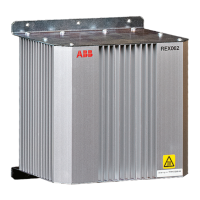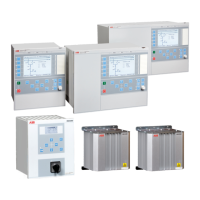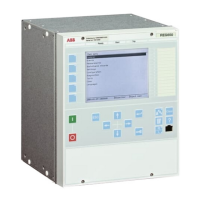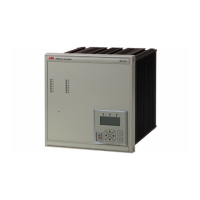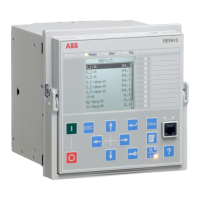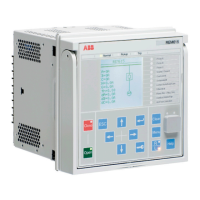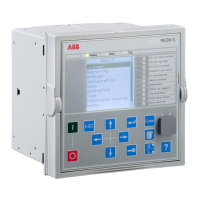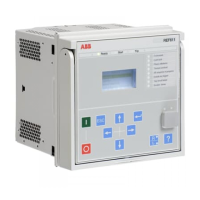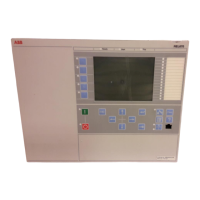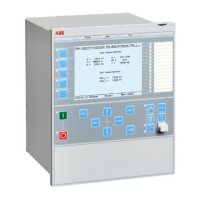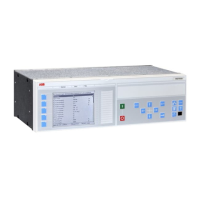If the denominator in equation 63 is called B and Z0m is simplified to X0m, then the
real and imaginary part of the reach reduction factor for the overreaching zones can be
written as:
( )
( )
( ) ( )
2 2
0 Re
Re 0 1
Re Im
X m B
K
B B
×
= -
+
EQUATION1427 V2 EN (Equation 132)
( )
( )
( ) ( )
2 2
0 Im
Im 0
Re Im
X m B
K
B B
×
=
+
EQUATION1428 V2 EN (Equation 133)
Parallel line is out of service and earthed in both ends
Apply the same measures as in the case with a single set of setting parameters. This
means that an underreaching zone must not overreach the end of a protected circuit for
the single phase-to-earth faults.
Set the values of the corresponding zone (zero-sequence resistance and reactance)
equal to:
R
0E
R
0
1
X
m0
2
R
0
2
X
0
2
+
--------------------------
+
è ø
ç ÷
æ ö
×=
EQUATION561 V1 EN (Equation 134)
X
0E
X
0
1
X
m0
2
R
0
2
X
0
2
+
--------------------------
–
è ø
ç ÷
æ ö
×=
EQUATION562 V1 EN (Equation 135)
8.3.4.7 Setting of reach in resistive direction
Set the resistive reach R1 independently for each zone.
Set separately the expected fault resistance for phase-to-phase faults RFPP and for the
phase-to-earth faults RFPE for each zone. For each distance zone, set all remaining
reach setting parameters independently of each other.
The final reach in resistive direction for phase-to-earth fault loop measurement
automatically follows the values of the line-positive and zero-sequence resistance,
and at the end of the protected zone is equal to equation
68.
1
R 2 R1Zx R0Zx RFPEZx
3
IECEQUATION2303 V2 EN (Equation 136)
1MRK 502 071-UEN - Section 8
Impedance protection
Generator protection REG670 2.2 IEC and Injection equipment REX060, REX061, REX062 255
Application manual
